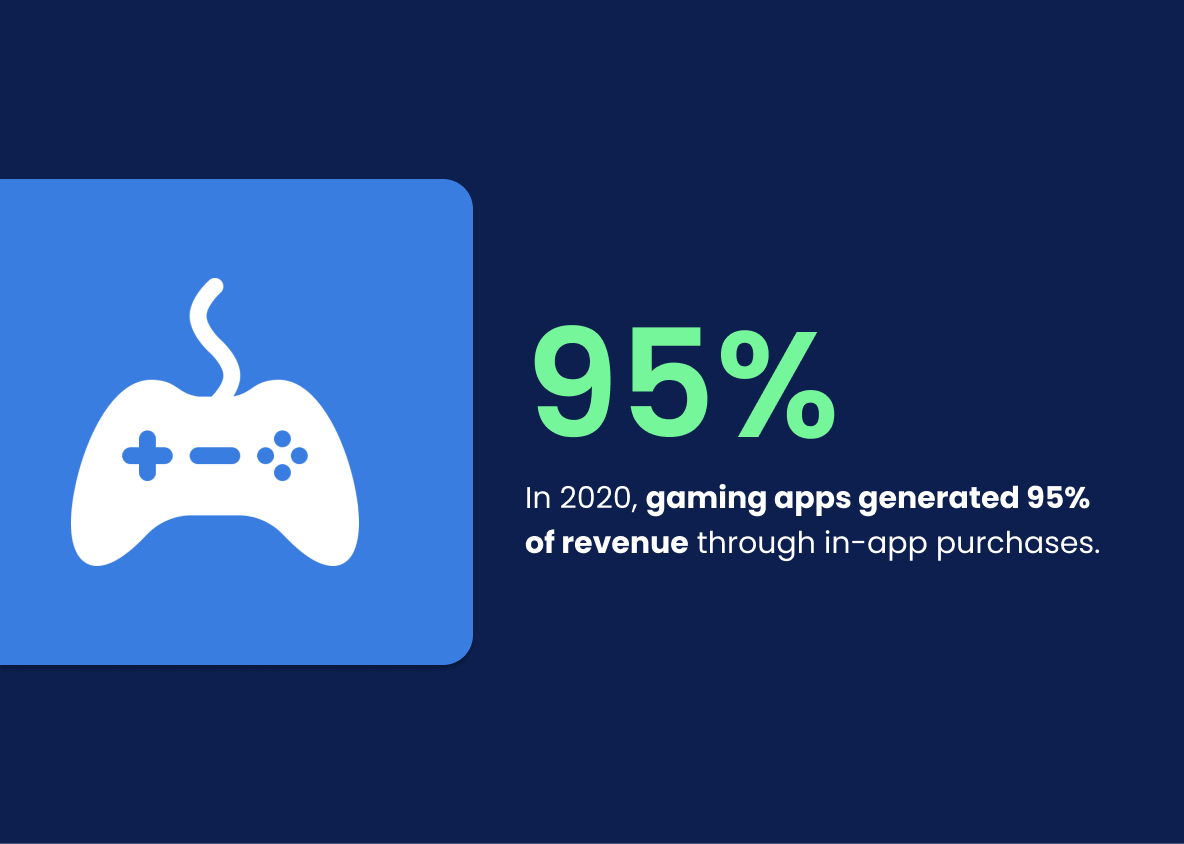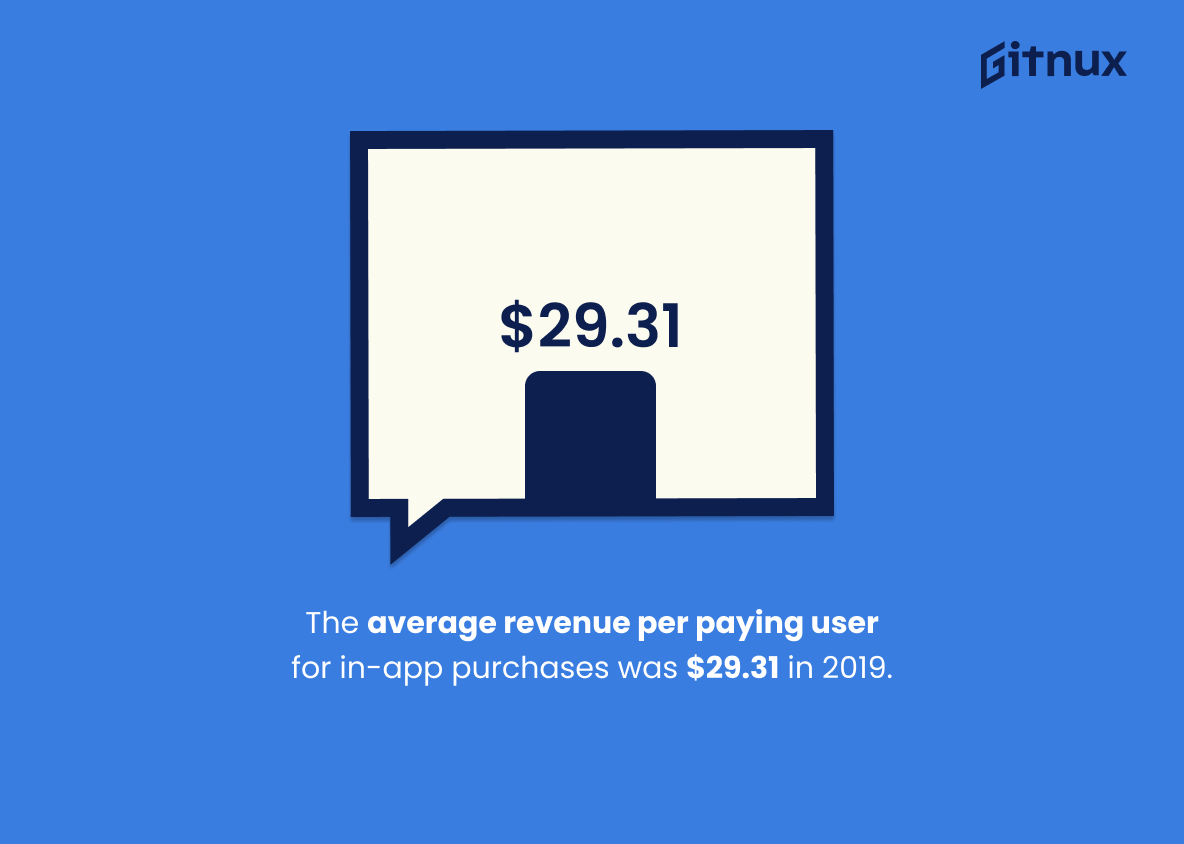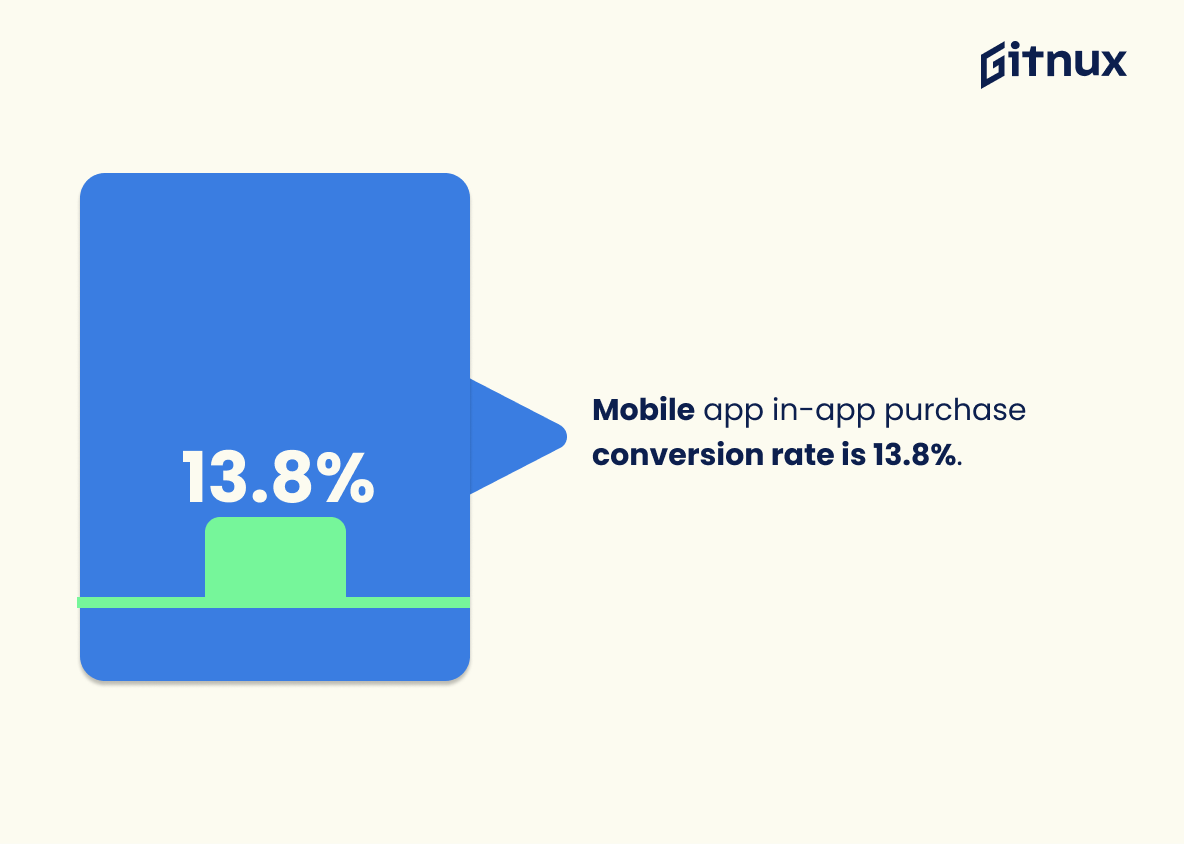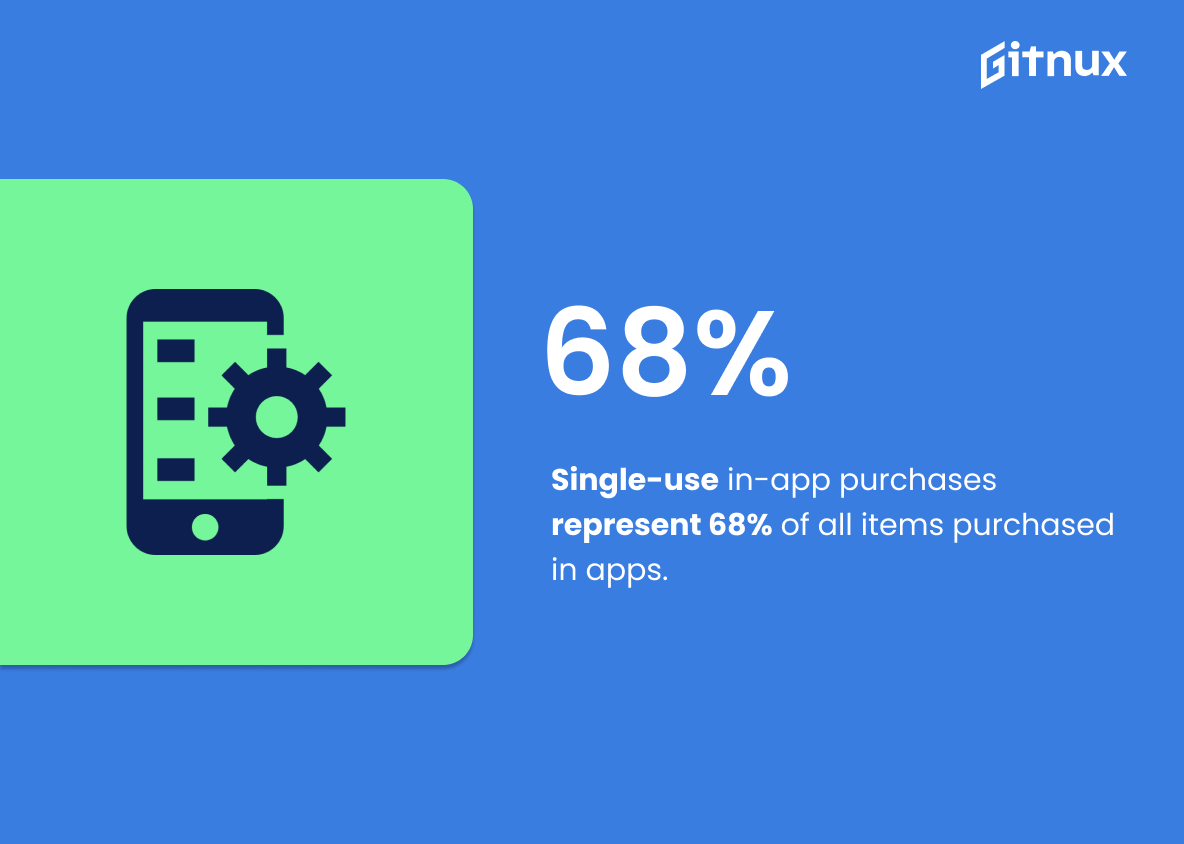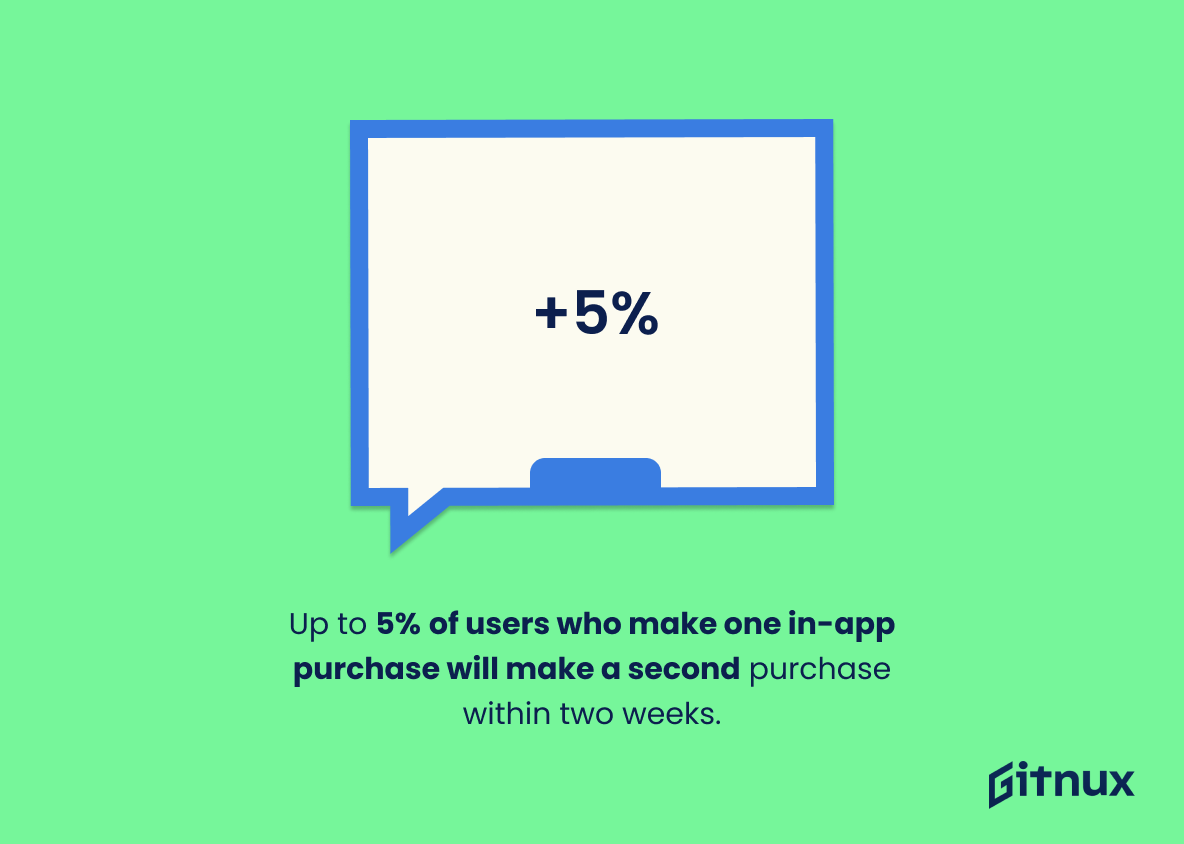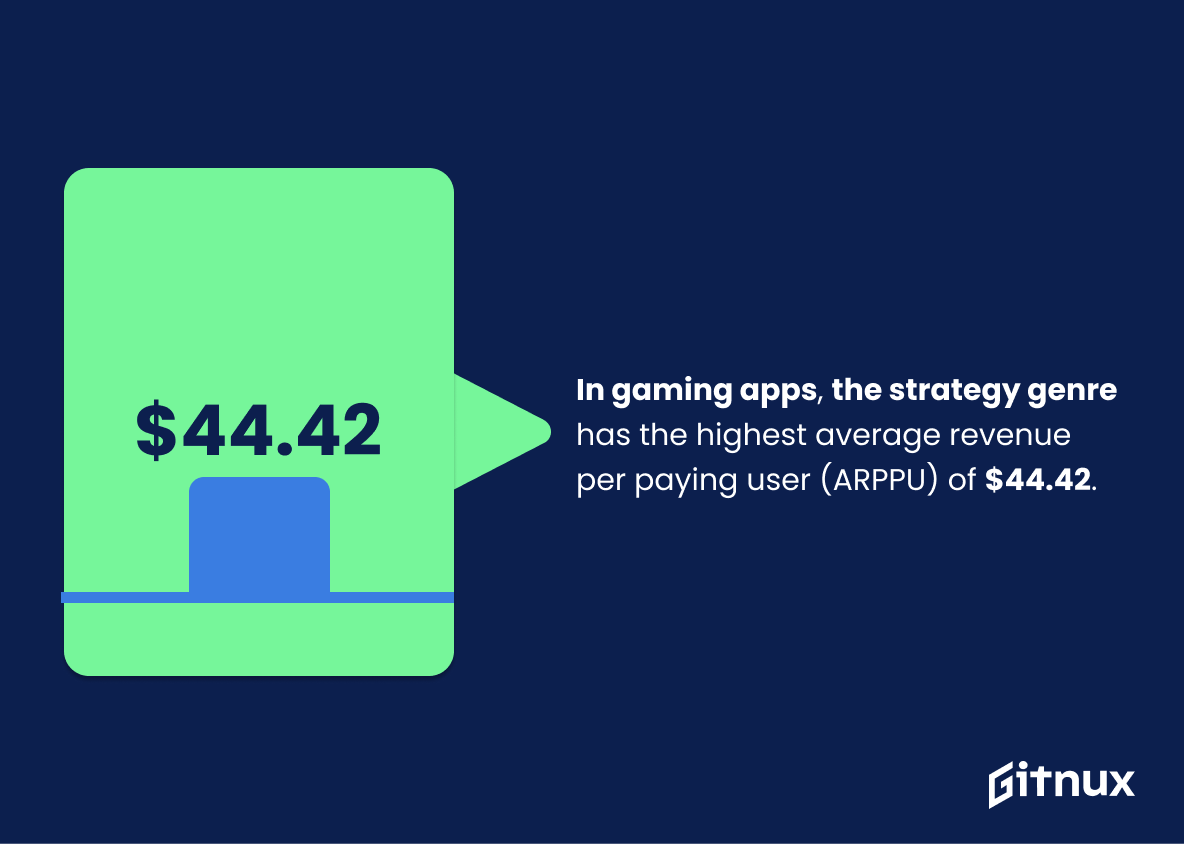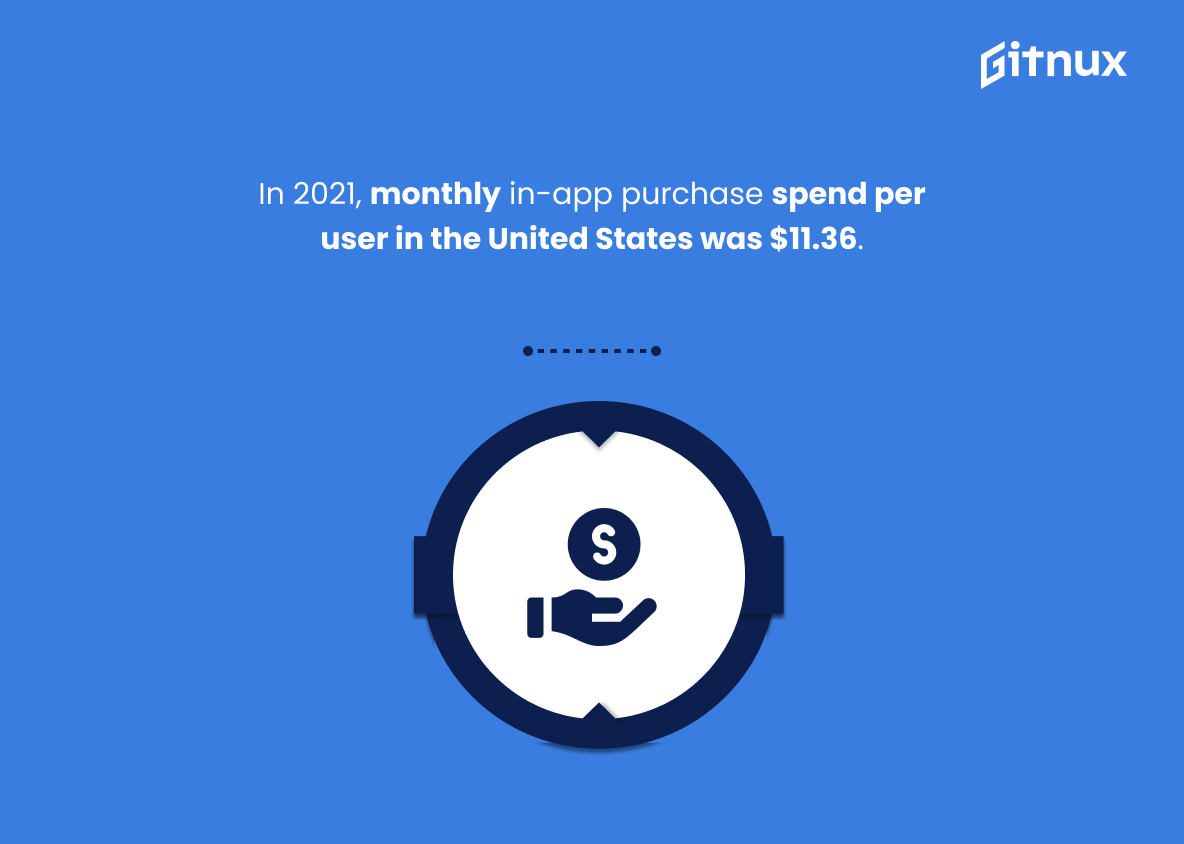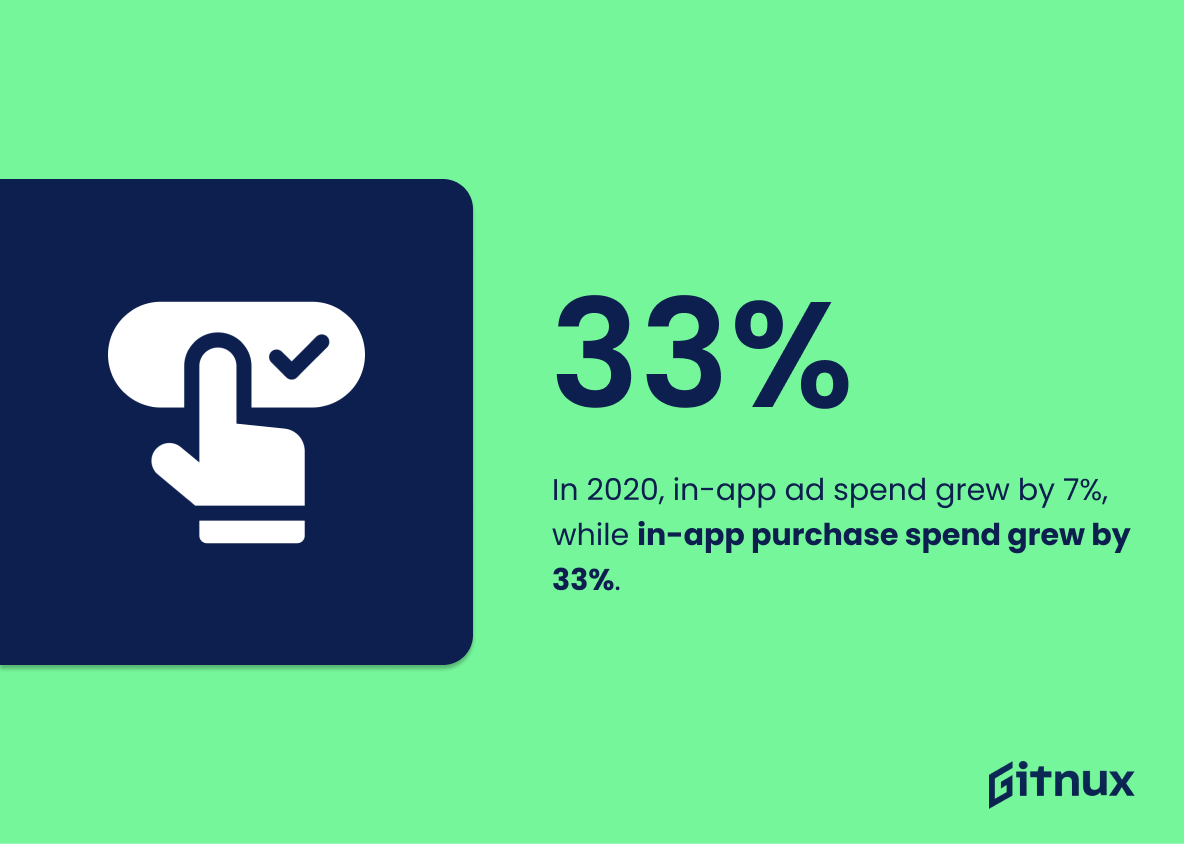In-app purchases have become an increasingly popular way for mobile app users to monetize their apps. According to data from Business of Apps, 5% of mobile app users spend money on in-app purchases. In 2020, worldwide in-app purchase revenue amounted to $76.5 billion and is predicted to reach $96.3 billion by 2023 according to Appinventiv’s prediction report. Gaming apps generated 95% of their revenue through in-app purchases while non gaming apps accounted for 71%. The average revenue per paying user (ARPPU) was recorded at $29.31 in 2019 with the global median price being set at 1$90 per purchase as reported by DSP IO blog post . Android users outspend iOS users on these transactions accounting for 54% total share whereas the conversion rate stands at 13%. On average only 5 percent of free app installers make a single purchase within two weeks and peak usage time lies between 6PM – 10 PM according to Leanplum’s research findings . Credit cards are used most often when making such payments with 49 % using them followed closely by PayPal which accounts for 33 % , Subscription based services saw a 32 % increase driven mainly due strategy genre games having highest ARPPU ($44). US monthly spending averages 11 dollars 36 cents while ad spends grew 7%, compared against 33 percent growth seen from IAPs during same period as reported Pubmatic’s Mobile Ad Trends Report 2020 Finally Gameanalytics found that those who use an application over four months tend spend 15 more than first month visitors do..
This statistic is a testament to the immense potential of in-app purchases as a revenue stream. It shows that, despite the challenges of 2020, businesses were still able to generate a staggering amount of money from in-app purchases. This statistic is a powerful reminder of the importance of in-app purchases and the potential they have to generate significant revenue.
In-app purchase revenue is predicted to reach $96.3 billion in 2023.
This statistic is a testament to the immense potential of in-app purchases as a revenue stream. With such a large projected figure, it is clear that in-app purchases are becoming an increasingly important part of the digital economy. This statistic is a reminder of the importance of understanding and leveraging the power of in-app purchases to maximize profits.
In App Purchase Statistics Overview
In 2020, gaming apps generated 95% of their revenue through in-app purchases.
This statistic is a testament to the power of in-app purchases in the gaming industry. It highlights the importance of offering in-app purchases as a way to monetize gaming apps, as it has proven to be an incredibly successful revenue stream. This statistic is essential for anyone looking to understand the current state of the gaming industry and the potential of in-app purchases.
The average revenue per paying user for in-app purchases was $29.31 in 2019.
This statistic is a key indicator of the success of in-app purchases, as it provides insight into how much money users are spending on these purchases. It is an important metric to consider when evaluating the effectiveness of in-app purchases, as it can help to determine whether or not they are providing a good return on investment. As such, it is an essential statistic to consider when discussing in-app purchase statistics.
Android users outspend iOS users on in-app purchases, with Android accounting for 54% of total in-app purchase revenue in 2020.
This statistic is a testament to the power of Android users when it comes to in-app purchases. It shows that Android users are not only more active in making in-app purchases, but they are also more willing to spend money on them. This is an important insight for any business looking to maximize their in-app purchase revenue, as it suggests that Android users should be a key focus for any in-app purchase strategy.
Mobile app in-app purchase conversion rate stands at 13.8%.
The fact that the mobile app in-app purchase conversion rate stands at 13.8% is a testament to the power of in-app purchases. It shows that when users are presented with the opportunity to purchase something within an app, they are likely to take advantage of it. This statistic is a valuable insight for app developers and marketers, as it demonstrates the potential for monetizing their apps through in-app purchases.
On average, only 5.6% of users who install a free app make at least one in-app purchase.
This statistic is a telling indication of the effectiveness of in-app purchases as a monetization strategy. With such a low percentage of users making in-app purchases, it is clear that developers must look for other ways to monetize their apps. This statistic is an important reminder that in-app purchases are not a guaranteed source of revenue.
Single-use in-app purchases represent 68% of all items purchased within apps.
This statistic is a telling indication of the power of in-app purchases. It demonstrates that the majority of items purchased within apps are single-use, meaning that users are actively engaging with the app and taking advantage of the convenience of in-app purchases. This statistic is an important factor to consider when discussing the success of in-app purchases.
Up to 5% of users who make one in-app purchase will make a second purchase within two weeks.
This statistic is a valuable insight into the effectiveness of in-app purchases, as it demonstrates that a significant portion of users are likely to make a second purchase within a short period of time. This indicates that in-app purchases are an effective way to engage users and encourage them to make repeat purchases. This is an important factor to consider when discussing in-app purchase statistics, as it provides a valuable insight into the effectiveness of this monetization strategy.
Subscription-based apps showed a 32% increase in revenue in 2020, driven by in-app purchases.
This statistic is a testament to the success of subscription-based apps in 2020, demonstrating that in-app purchases have been a major driver of revenue growth. It is an important indicator of the potential of in-app purchases to generate income for app developers and businesses, and thus a key statistic to consider when discussing the overall impact of in-app purchases.
Within gaming apps, the strategy genre has the highest average revenue per paying user (ARPPU) of $44.42.
This statistic is a valuable insight into the gaming app market, as it demonstrates that the strategy genre is the most lucrative for developers. This information can be used to inform decisions about which genres to focus on when creating new apps, as well as which genres to target when marketing existing apps. Additionally, this statistic can be used to compare the potential revenue of different genres, helping developers to make more informed decisions about which genres to invest in.
In 2021, the monthly in-app purchase spend per user in the United States was $11.36.
This statistic is a telling indication of the growing popularity of in-app purchases in the United States. It shows that users are increasingly willing to spend money on digital products and services, which is a positive sign for businesses that offer in-app purchases. This statistic is also important for understanding the current state of the in-app purchase market in the US, and can be used to inform decisions about how to best capitalize on this growing trend.
In 2020, in-app ad spend grew by 7%, while in-app purchase spend grew by 33%.
This statistic is a telling indication of the growing importance of in-app purchases in the digital economy. It shows that consumers are increasingly turning to in-app purchases as a way to access content and services, and that businesses are responding by investing more in this area. This trend is likely to continue, making in-app purchases an important part of any digital strategy.
Conclusion
In-app purchases have become an increasingly popular way for mobile app users to spend money. According to the statistics, 5% of all mobile app users make in-app purchases and this number is expected to grow as global in-app purchase revenue is predicted to reach $96.3 billion by 2023. Gaming apps generate 95% of their total revenue through in-app purchases while non gaming apps account for 71%. The average price per user was found to be around $29.31 with a median price of $1.90 globally, and Android users outspend iOS on these types of transactions accounting for 54% of total spending worldwide. In 2021, US consumers spent an average monthly amount on in-apps at 11 dollars and 36 cents which has seen a 33 percent increase from 2020 due largely driven by subscription based services that saw 32 percent growth during the same period . It’s also worth noting that over 49 %of all IAPs are made via credit cards while single use items represent 68 %of purchased goods within applications Furthermore , it appears that usage peaks between 6PM – 10 PM each day with those who have been using the application longer than 4 months being 15 % more likely than new customers when making such payments . All things considered , it’s clear why so many developers are turning towards monetizing their products through offering various forms or levels access via IAPs
References
0. – https://www.www.appsumer.io
1. – https://www.gamesight.io
2. – https://www.sensortower.com
3. – https://www.appinventiv.com
4. – https://www.www.adjust.com
5. – https://www.www.appsflyer.com
6. – https://www.www.statista.com
7. – https://www.www.pubmatic.com
8. – https://www.www.cleveroad.com
9. – https://www.qonversion.io
ZipDo, cited June 2023: In App Purchase Statistics
